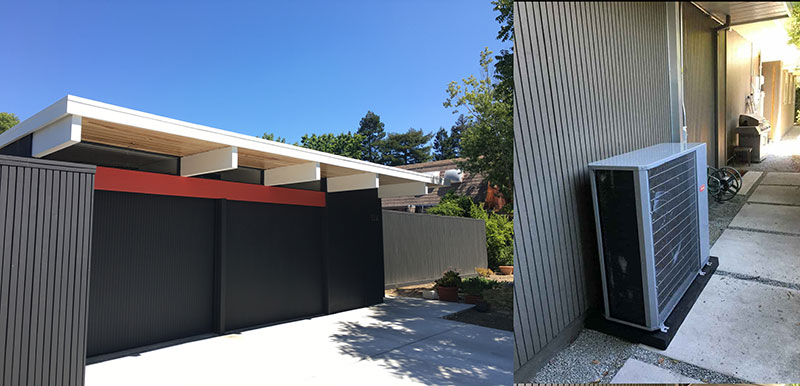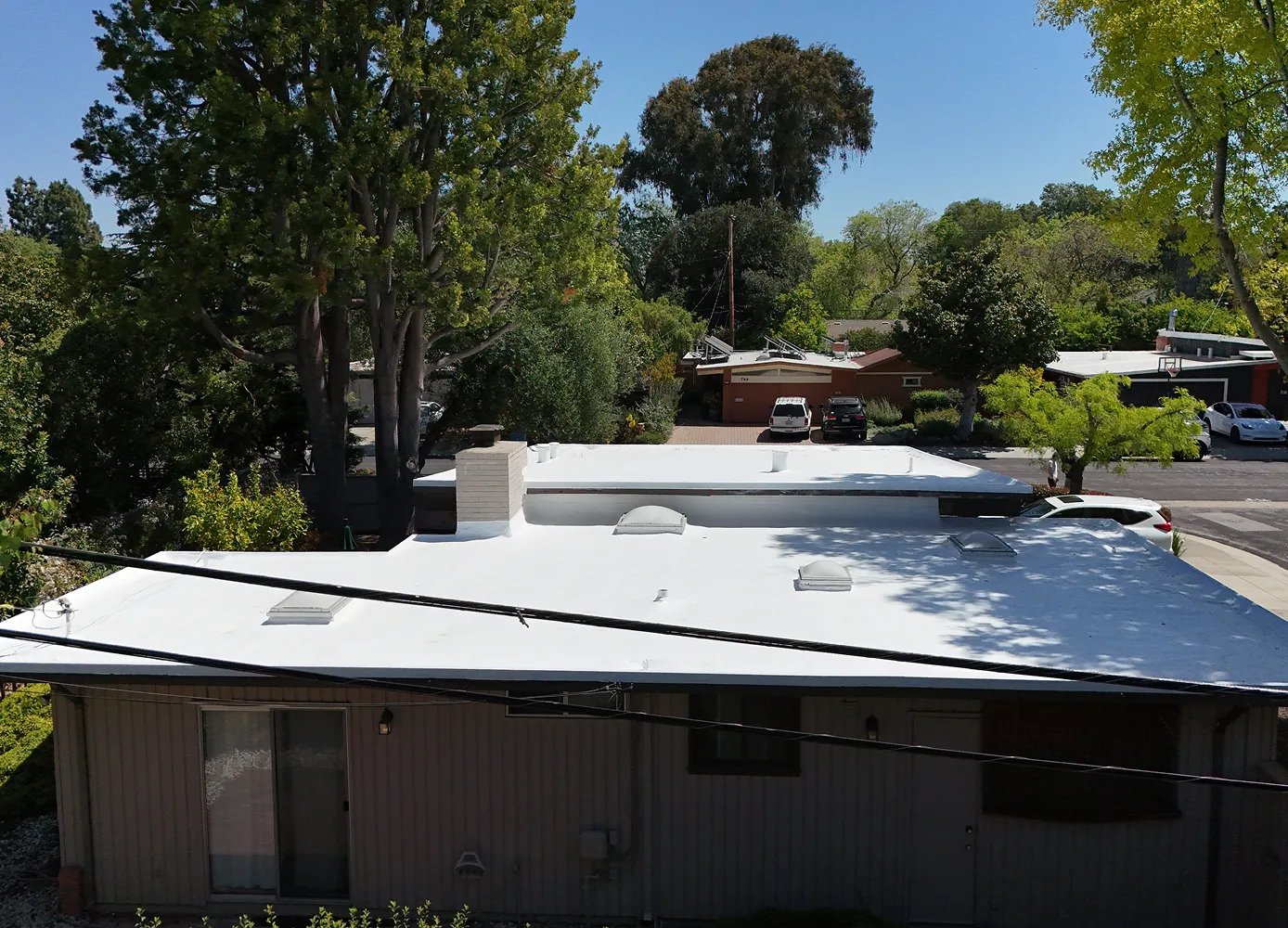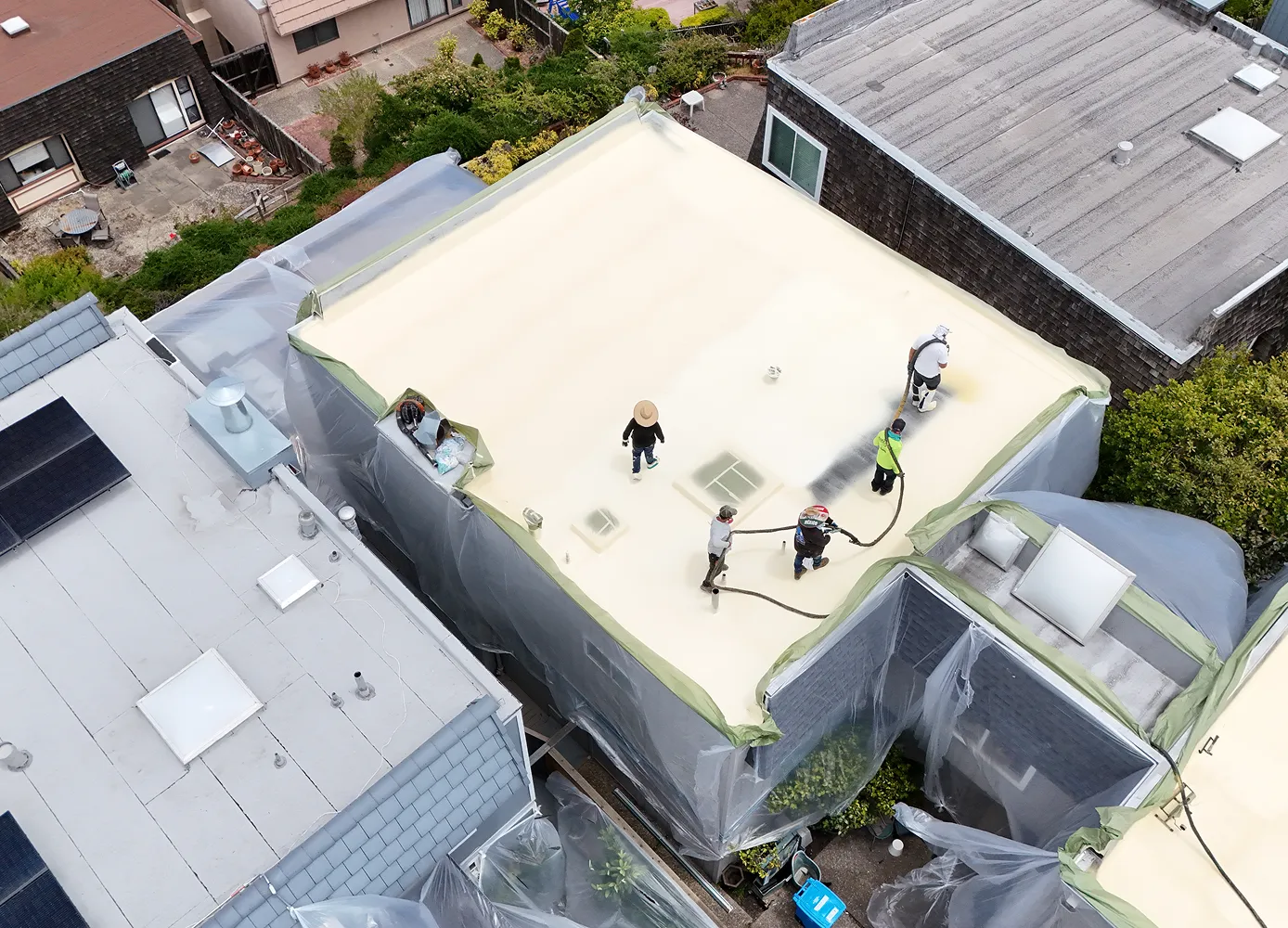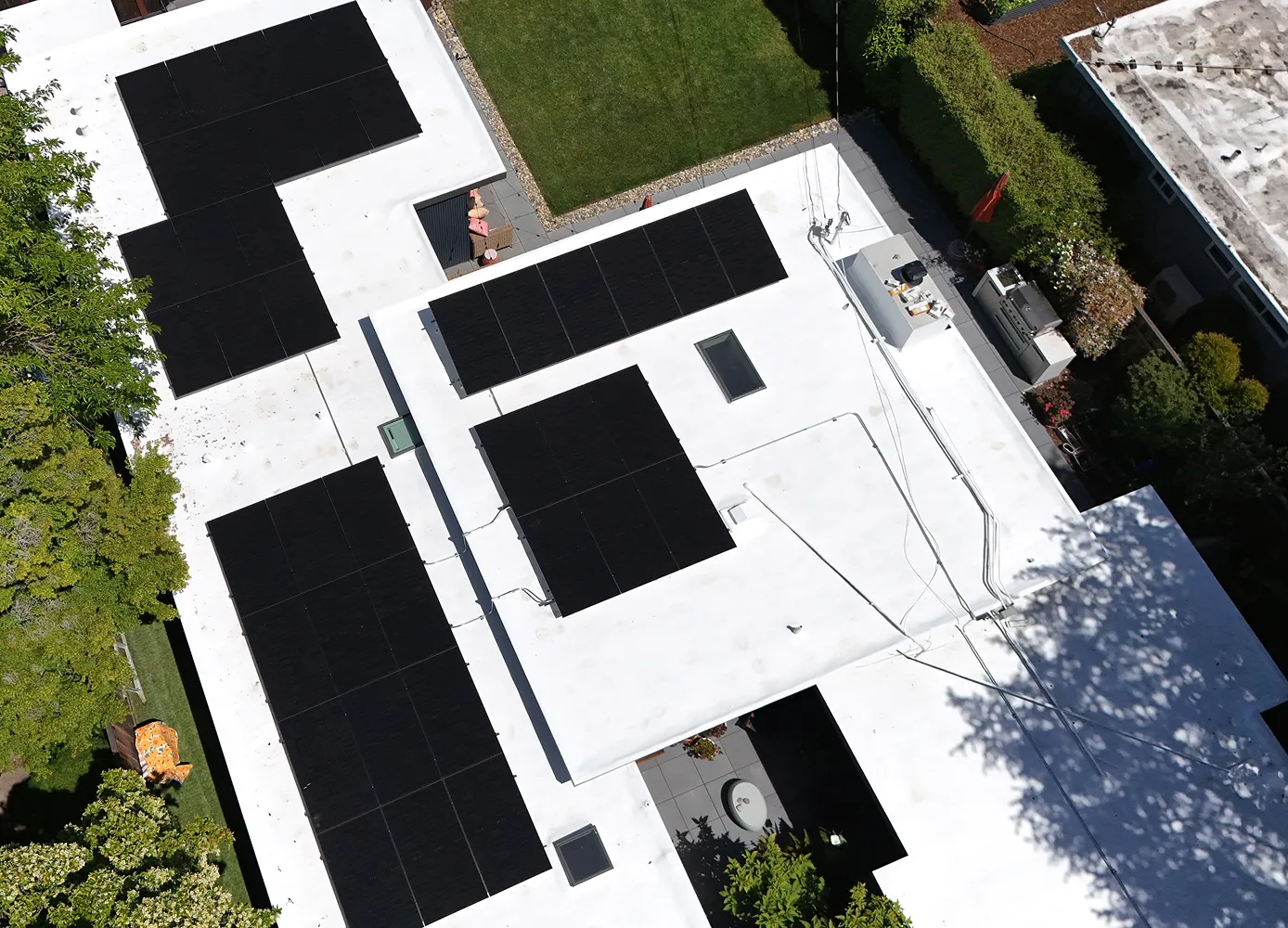⭐️⭐️⭐️⭐️⭐️
20,000+ Satisfied Customers & Over 30 years of Service
Trustindex verifies that the original source of the review is Google. We installed a solar system with batteries with Dura-Foam last year. The system is working fabulously – it went through a winter with several power outages, and we usually don’t even know we have an outage until PG&E informs us. What a relief. Dura-Foam’s owner Trevor Hill was responsive, open to new ideas & willing to work with new partners. We integrated a battery system from FranklinWH as well as a SPAN sub panel to maximize the use of the solar power we are producing. Dura-Foam worked with the FranklinWH rep Trevor Gould to design and install a robust system that is transparent, efficient and most of the time completely self-reliant. One glance now tells me how much I produce, what I use, and what I use it for. Franklin’s aGate & SPAN were just the combination for someone like me who really likes data. Trevor Hill was patient and willing to answer any questions during the installation, the plan set was comprehensive, the work his team did was excellent, and they met the occasional construction challenge with the willingness and expertise to make it right. Cooperation with FranklinWH was clearly excellent. And finally, Trevor Hill even put together a full package of cohesive documentation for the CPA to document everything for the tax credit. 5 stars all around for the entire team and the products that make up our wonderful system.Trustindex verifies that the original source of the review is Google. I had contacted Durafoam and talked to Trevor about some minor roof work earlier this year. He was very responsive and got that done quickly. We eventually had them resurface our 20+ year old foam roof in summer and they were able to fit us on short notice. Always cheerful, Ali was a pleasure to work with. He and his crew were hardworking, as well as meticulous, and took time to protect the fruit and vegetable plantings in my backyard. Anthony, who's in charge of ops, was here a couple times and helped us resolve some logistical issue on the project. We are very happy with the quality of the roof work. Ali's team was able to accommodate our schedule and completed the job just as house guests AND a heat wave were expected at the same time! Thanks to our newly resurfaced roof, our home, which has no AC, weathered several extended heat waves of 90-100+ F this summer comfortably. While foam roofs are not cheap, they sure make severely weather more bearable! I totally recommend Durafoam to anyone looking for a great foam roof contractor!Trustindex verifies that the original source of the review is Google. They know what they are doing. Would recommend to friends and Family.Trustindex verifies that the original source of the review is Google. We recently needed a roof inspection on short notice for insurance purposes. Trevor from Dura Foam followed up quickly to our call. He helped us out, and gave us the documentation we needed to avoid a bad situation. We really appreciate their great response and workmanship!Trustindex verifies that the original source of the review is Google. Dura-Foam Roofing & Solar Center were really easy to work with! I would definitely recommend them to anyone with roofing issues. They responded to my inquiry and were able to get someone out to look at our roof quickly. I'll definitely reach out again in the future if we have any other issues that come up!Trustindex verifies that the original source of the review is Google. Dura-Foam Roofing & Solar Center did a fantastic job repairing our foam roof after it was damaged by an enormous fallen tree. Lusio, David, and Emiliano each performed different parts of the complicated job. They were all very professional and cordial. The work was performed efficiently, neatly and on schedule. And Isaac, the office staff person who coordinated our job, was a pleasure to work with. We couldn't have been happier. I highly recommend this company!Trustindex verifies that the original source of the review is Google. A Bay Area treasure. Look at the pictures and you will see the people that you will be working with. They pose like a family and that is exactly how it feels to work with them. 9 years and 6 months after my roof and solar project was installed, I had an issue with my solar generation. I called Dura-Foam and was surprised that they remembered me, my home and the installation. Anthony and Lusio came out and quickly identified the issue. Hard working and professional, they took the time to double-check everything and allay my concerns. They stand behind their work and did not charge me for the service call even though it has almost been 10 years since the install. If you have a roof (especially an Eichler) you need to give these folks a call. Honest, courteous and professional Dura-Foam is the right call for roofing and solar.Trustindex verifies that the original source of the review is Google. We were very satisfied with the service. We found the workers were very cordial and we appreciate it!
Sprayed polyurethane foam is unique in that it is manufactured on-site. There are countless compositions for this plastic based product all based on the various intended applications. The type of compositions used for foam roofing or for SPF foam insulation are both very similar in density, composition, and in R-value performance. An R-Value is a benchmark for measuring the effectiveness of any insulator, with a baseline where 1 inch of wood has an R-value of about one. As an example, an R-Value of 1″ of low density foam might be 8, which represents 8″ of wood.

Sprayed polyurethane foam was originally discovered as an ideal insulator, designed to protect space shuttle fuel tanks. Further adaptation allowed polyurethane foam to be used in production of plastic vehicle moldings, and for refrigeration applications, especially for walk-in freezers and refrigerators. In extremely harsh climates, such as those found in North Michigan, polyurethane foam is used as an insulator, to shield homes from the harsh external climates.
Since SPF foam can mold to any surface, it works great in applications where traditional fiberglass or cellulose insulation fail due to space and size constraints. And SPF has even more unique qualities; SPF foam has extremely high R-values (often 3-4 times more than fiberglass or cellulose) and closed cell foam blocks air infiltration. Aside from all that, traditional materials such as cellulose or fiberglass have major performance degradation in extreme heat or cold.
In other words, in laboratory tests, traditional insulation performs as low as 20% of their stated R-values, while polyurethane foam usually performs at 70% or more of the stated R-values. In other words, in extreme cold or hot conditions, polyurethane foam is a even more superior to traditional insulation products. This is why SPF has risen in popularity in many applications, including foam roofing an insulation.
Although Tony Harfert, founder of Harfert Builders won the contract to SPF insulate a 7,000 square foot residence in Northwest Michigan, he felt no relief. This was due to the fact that his team would be required to install the insulation in the dead of winter, in biting cold conditions. The homes position between lake superior and lake Huron meant exposure to sometimes 50 mph plus winds, putting the thermometer to negative 37 degrees Fahrenheit (and often well below negative 50 degress Fahrenheit with wind chill factor included).
45 year old Tony Harfert had 12 years experience as a general contractor, and three years of SPF experience (for a total of 15 years experience) before starting the North Michigan custom home project. Three years before building the Michigan custom home, Harfert Builders saw that sprayed polyurethane foam (SPF) was quickly becoming a standard in the frigid climes of the Northern United States.

This led to the decision for Harfert to become a certified distributor for Demilec. This included 4-days of school in Texas, as well as a quality assurance program called Inseal-Right. This program allows Demilec to randomly inspect applicants projects during the first 6 months. Demilec credits this quality control program as primary reason for 11 years of no call backs or warranty issues for their SPF products (used in foam roofing, insulation, and other applications).
In order to complete the prominent physician’s home on-budget and on-time, Harfert and his SPF crew would face the challenge of insulating and protecting the home before extreme weather conditions could do any damage (such as causing the poured concrete basement walls and floors to buckle before curing). The main floors of the home would be wood, so only the basement floor had this potential issue.
A few propane powered construction heaters (300,000 BTU “Mr. Heater”) kept things warm in the basement to ensure proper cement curing, while an ES laser thermometer was used to assure temperatures remained in a safe control range. One inch of 2lb closed cell polyurehtane foam (Demilec LLC “Heatlok”) was applied to the basement walls (closed cell foam is also used in foam roofing). This would allow the heaters to more effectively keep the in-progress basement walls and floors from buckling. Otherwise, the 30F below zero outside temperatures would wreak havok on the incomplete home. For the next step, the construction team framed the basement with 2x4s. After the electricians finished their work, the walls between the studs were sprayed with demilec selection 500 (1/2lb open-cell foam; this is very different from the closed cell foam used in foam roofing).
As the construction workers finished each section, Harfert Builders contuned to insulate each section, including the roof system which included over 58 valleys, hips, and ridges. Sherwin-Williams’950 acrylic caulk was applied directly into any seams to prevent direct air migration. Overall, the design of the home would have prevented it from being properly insulated against air infiltration with cellulose or fiberglass. Before the project was even complete, 50mph and 60mph winds could not be heard from inside the home–due to the complete prevention of air infiltration.
While inside the home, the effects frigid winds outside whipping across the great lakes could be seen–in stark contrast to the quiet peaceful environment inside the home. The Sprayed Polyurethane Foam (SPF) insulation truly sealed the home from the elements, creating a temperate pleasant indoor environment. Related Pages:
These examples highlight why foam roofing is not just an alternative but the preferred solution for businesses looking for unmatched durability, energy efficiency, and cost savings.



Trusted roofing and solar solutions built for strength, efficiency, and long-term protection tailored to your home’s needs.
Get important tips on keeping your roof efficient and safe in the Bay Area!
© 2025 All Rights Reserved Dura-Foam